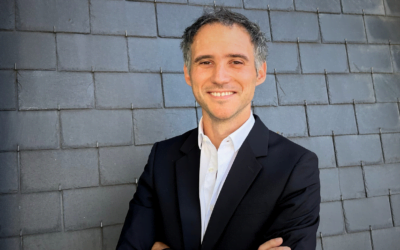“Omnichannel advertising: the creation of a unified brand experience due to brands taking a holistic approach to the different channels to which audiences are exposed.”
The varied nature of omnichannel can lead to differing descriptions, but this is how we currently define it. The crucial point however is that programmatic’s ongoing evolution means a range of channels can now be connected using technology (such as the Hawk platform).
This enables brands to communicate ever more effectively with their audiences, and reflects that people seamlessly switch between a variety of different screens and touch points as they go about their daily lives.
Omnichannel therefore seemed the ideal topic for the second Hawk breakfast briefing, which we held last month, once again congregating at the Charlotte Street Hotel.
The event took the form of two expert panel sessions, moderated by Steve Doyle.
The Rise of Omnichannel Advertising was discussed by Gordon Eldrett from Circana (formerly IRI), Emma Turner from Croud, Shane Hoyle from Hyperoptic, Hannah Marshall from Matterkind, and Josh Hitchcock from Hawk.
This was followed by The Future of Omnichannel Advertising with Paula Fernandez from Captify, David McDiarmid from Beam Suntory, Michelle Sarpong from the7stars, Ryan Rummery from DAX, and Shanil Chande from Hawk.
As one would expect it was a varied discussion and although it’s not possible to cover all the in-depth input, there were some key threads that ran through the morning.
The current state of omnichannel play
Omnichannel increases the ways to reach the right audience, but the nuance this introduces also adds complexity. And there is no silver bullet; the right channel mix differs depending on the campaign, client, sector, etc. ‘New’ channels are not automatically the only option and there is certainly still a place for TV, radio, and other ‘offline’ touchpoints, with omnichannel offering a way for digital channels to complement the more traditional ones.
Meanwhile, more channels continue to become viable, adding to the mix. Currently, in-game offers huge audiences (with a much wider demographic than young male gamers suggested by the stereotype), while the potential of the metaverse is almost too huge to comprehend.
Each channel has a specific role based on its strengths. Recent research by Hawk shows that audio is the media of memorisation, with 57% of exposed users remembering an ad they have heard, while digital out-of-home (DOOH) is the media of consideration (45% of viewers exposed to an ad associate it with the brand), and (mobile) display is the media of intention as 25% of people seeing a display or video campaign plan to shop in-store or buy the product. It’s important to factor in these functions – as well as how the channels tie together to create a seamless brand experience for the audience being targeted.
However, for all its promise, omnichannel is also hindered by an industry that is still structured in silos, resulting in budget allocation issues and a lack of channel coordination. Many clients are reticent to try it; the challenge is for brands and agencies to embrace omnichannel and be open-minded to the channel mix.
All in all, omnichannel is a constant learning process.
Creative challenges
Creative is fundamental to the effectiveness of any campaign. However, it’s also a source of friction, with a key issue being the tendency to cut down 60- or 30-second TV ads to fit other channels, rather than the main drivers of the campaign being considered and the ad(s) required built accordingly. This calls for more integration between the creative, media and tech agencies; working together from the beginning enables the different teams to understand the objectives and strategy – rather than being pulled in mid-way through the process. (In recognition of this, several agencies now have their own creative houses.)
It also drives the need for conversations that fuel an agency’s understanding of what the client needs to achieve, along with plenty of touch points so that everyone is involved throughout the process and on a regular basis.
Measurement
The nature of omnichannel means there is no ‘one size fits all’ solution to measuring its effectiveness. Not every impression has the same value, while offline channels will have slightly different KPIs to digital. The key is to avoid looking at any metric in isolation and link results to business objectives by using tools such as brand lift surveys, sales uplift, footfall into stores, etc, to determine how well a campaign performed in terms of achieving these.
Whether or not the industry should be looking for new metrics was mooted, with the counter argument being that there is already a good toolkit, and it risked further complicating the measurement issue, as well as encouraging additional silos. That said, it is important to be open to new ways of measuring, not just fall back on how it’s been done previously.
Cookie deprecation and privacy regulations
Despite the inevitability of the eventual loss of the third-party cookie, it has caused a good amount of industry panic. However, overall, our panel believed it encouraged people to engage with the bigger picture, as well as increase the use of data and technology to find innovative ways to drive efficiency. This is seeing opportunities outside standard targeting being sought out, with the use of tools such as spatial / location data and cross-channel retargeting for example, as well as partner collaborations that would not have been considered five years ago.
Omnichannel is completely feasible without cookies (Hawk has been cookie-less since day one for example), and persuading people to look at the context rather than the individual can only be a good thing from an omnichannel stance.
The increasingly privacy-focused environment was also seen as positive for omnichannel, particularly in terms of ensuring the regulated use of technology (the need for which has been brought sharply into focus by the rapidly increasing use of AI).
Carbon footprint reduction
The industry has moved a long way from the ‘black box’ of programmatic; there is now the ability to report on and verify almost every element of data and campaign activation, with this being deployed to understand the carbon impact of advertising. Coupled with supply chain optimisation with partners such as Scope3, trust and transparency are now a reality. This will continue to be enhanced by partnerships (such as the one between Hawk and the7stars).
None of this should hinder omnichannel; it’s increasingly being proved that changes to lower emissions (whether in terms of the supply path or reducing the ‘weight’ of the creative) can be made to campaigns without performance being impacted.
As with the depreciation of the cookie, reducing carbon footprints is also helping the industry to focus on efficiency.
Collaboration and conversations
As noted above, industry challenges have led to the development of collaborations between partners that would have been unlikely to happen even a few years ago. These are resulting in more powerful solutions being built than if each entity had acted alone.
Omnichannel is also driving the need for more conversations, whether that’s between internal teams (such as insights, research, and planning) or external agencies (the media agency clearly articulating what is needed so that creative is aligned for example, and communication to ensure that everyone has access to the data they need). In-depth conversations with clients mean their objectives are understood, with agreements on what should be measured, and emission reduction strategies being part of the discussion.
Activating a successful omnichannel strategy
Good omnichannel campaigns take an audience-first approach and use all the bells and whistles that the medium affords for planning and activation. Test and learn – a mainstay of the digital marketing world – is increasingly important, as is a willingness to be flexible and embrace change. Omnichannel benefits from fluid business models that can adjust to a client’s needs and rapidly changing consumer preferences (demonstrated by the current cost-of-living crisis for example). And a willingness to share data and audiences is fundamental – collaboration is the future.



